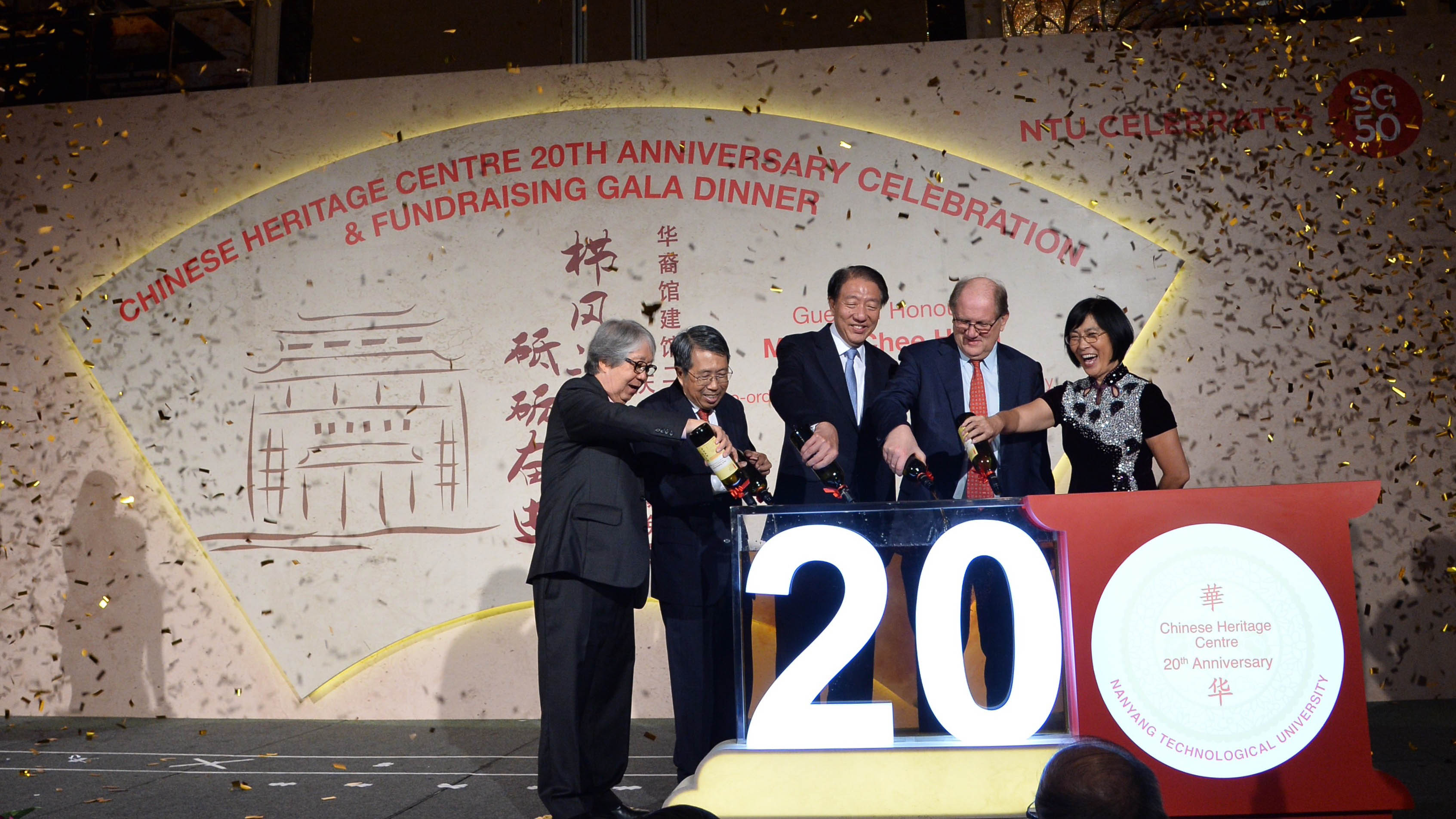DPM Teo Chee Hean at the 20th anniversary celebrations of the Chinese Heritage Centre on 28 November 2015.
Professor Bertil Andersson,
President of NTU,
Professor Su Guaning,
Chairman, Chinese Heritage Centre Board of Governors,
Professor Zhou Min, Director,
Chinese Heritage Centre,
Distinguished guests, ladies and gentlemen,
让我先用华语发言。恭喜华裔馆庆祝 20 周年纪念。今年,新加坡也庆祝建国 50 周年。
华人在新加坡独立前后,都做出了重要的贡献。先辈们付出努力和劳力,为我们创造美好家园。他们也回报社会,办学校、建医院、等。来自各界人士都出钱、出力,造福新加坡。
1995年,开办华裔馆让大家更了解先辈们的贡献,也更了解华族历史、文化和传统。1
接下来,让我用英语发言。
Twenty years on, the mission of the Chinese Heritage Centre has perhaps become even more important. We live in such an inter-connected world today. Singaporeans are exposed to many information flows and different influences. Even as we are plugged into the world, it is important for all of us, especially our young, to remember our roots and understand our own history, culture and values, and how we came together as a people, as we build a stronger sense of national identity.
From the start, Mr Lee Kuan Yew and his multi-racial team of founding leaders had a vision to build Singapore on the foundation of multi-racialism. That we are all Singaporeans, regardless of race or religion. That each community has a place here, and can chart its own future as an integral part of a united Singapore.
We have always placed strong emphasis on inter-communal harmony, not just in words, but through our policies and the way we live our daily lives. Over time, our various communities have strengthened what we have in common to unite all Singaporeans as one people. Today, Singapore is a multi-racial, multi-religious country. Indeed, we are the most religiously diverse country in the world2, yet we live in harmony. But maintaining our multi-racial, multi-religious harmony takes continuous hard work, based on give-and-take, mutual trust and understanding, and treating everyone fairly – regardless of race or religion. And, we must always stay watchful of the danger of accentuating differences that could divide us.
I have spoken about the Chinese community in Singapore. Why does the experience of the Chinese community in Singapore have relevance to the wider work of the Chinese Heritage Centre, and for Chinese overseas communities in other parts of the world?
The experiences that the Chinese community in Singapore have gone through are unique. Singapore is the only independent country in the world whose population is majority Chinese. But this was not always the case. In fact, the Chinese community in Singapore has lived through the entire range of experiences that a Chinese overseas community can face.
The Chinese community here during the early colonial times was an extension of China. It retained its loyalties and links to China. Subsequently the Chinese community in Singapore was a minority community pledging its loyalty to an independent multi-racial Malaysia. And after Independence, the Chinese community in Singapore became the majority community in a multi-racial Singapore, determined to build our own nation as one united Singapore, and take our future in our own hands.
These experiences have shaped the Chinese community along with all communities that make up Singapore. They form a key part of why we are who we are as Singaporeans, and our identity.
They also hold useful lessons for communities of Chinese overseas in other parts of the world, who may be going through experiences which at one time or another in our history, the Chinese community in Singapore has gone through.
I am glad that the Chinese Heritage Centre has been making continual improvements to reach out to Singaporeans of all races, especially young Singaporeans. For example, the Centre is revamping its two permanent exhibitions, and has held public lectures and accompanying exhibitions honouring pioneer Singaporeans. It has also started to digitise its Early Textbooks Special Collection to facilitate research on the Chinese community in Singapore and the region.
If done well, these and other initiatives will facilitate more conversations and deepen understanding about our heritage, culture and tradition, as a community, and also as part of the larger Singaporean identity. The Malay Heritage Centre, the Indian Heritage Centre and the Eurasian Heritage Centre also play similar, important roles for our Malay, Indian and Eurasian communities, and for all Singaporeans. Let us build on this strong foundation, to strengthen our collective Singapore spirit and identity.
This year, as we celebrate SG50, it is not just a time for us to look back, to remember where we came from, and to celebrate our journey so far. It is also a good milestone for us to look ahead, to chart our future together with purpose and direction, and to work together as one united people, to make Singapore even better by SG100.
I congratulate the Chinese Heritage Centre on the good work that you have done in your first twenty years. We wish you all the best in this important and meaningful work in the years ahead.
Thank you.
. . . . . . . . . . . .
[1] The centre was championed by then Minister of Information and the Arts, Mr George Yeo, along with Dr Wee Cho Yaw, Sir Li Ka Shing, Mr Liem Sioe Liong, and Dr Mochtar Riady. It was also backed by our Chinese clan associations and groups such as the Hokkien Huay Kuan and Ngee Ann Kongsi.
[2] Pew Research Center, April 2014, “Global Religious Diversity: Half of the Most Religiously Diverse Countries are in Asia-Pacific Region”
* * * * *
Explore recent content
Explore related topics

